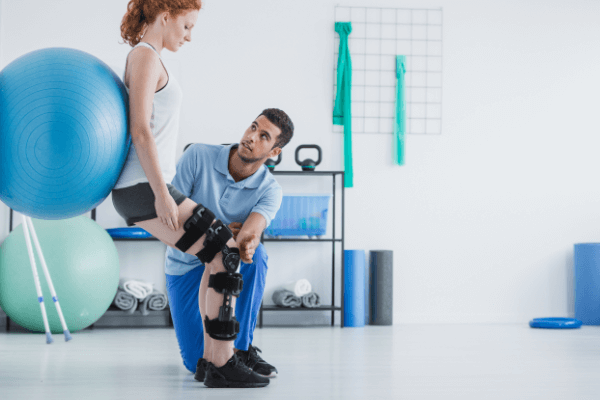Taking an opioid painkiller for relief can be a powerful temptation when a person suffers from arthritis, especially in a weight-bearing joint like the knee or hip.
The bad news is that the patient’s bones begin to rub together while an opioid will temporarily relieve pain, making the underlying cause of the disease even worse. And that’s long before you consider the addictive qualities of opioids.
Find the drug-free solution to arthritis pain instead of turning to opioids: physical therapy. To learn more about how consulting with a physical therapist will alleviate the effects of your arthritis, call our office.
The dangers of opioids
Because arthritis pain is not something that will naturally heal on its own, there is a growing danger of developing a dependency on opioid-based pain medication. Some 11.5 million Americans misused prescription painkillers in some way, costing an estimated $504 million in economic costs.
Opioids are often prescribed for the management of arthritis, after car accidents resulting in painful injuries, post-surgery, and chronic health conditions.
Opioids cause addiction in thousands of people every year and are one of the leading causes of death by overdose. In some cases, the use of opioids is unavoidable, however, physical therapy can drastically decrease a person’s reliance on them!
What is arthritis?
Arthritis pain is frequently the result of inflammation, often due to overuse of a particular joint. There are some times that environmental factors can worsen arthritis pain, but in many cases, the pain will develop and worsen as a result of the way the joint is used.
Arthritis symptoms can be managed with the help of physical therapy. Some of the most common symptoms that arthritis sufferers have to deal with include:
- Grinding Sensation: Arthritis is a result of lost cartilage, the material in the joints which acts as a cushion and lubricant between bones. The loss of cartilage can make it feel as if the patient’s bones are grinding together when they move.
- Swollen Tissues: The pain and inflammation associated with arthritis can cause tissue swelling near the impacted joint. The area surrounding the joint might feel warm to the touch.
- Pain: Arthritic joints may hurt during or after physical movement.
- Joint Stiffness and Aches: The joints are especially stiff upon waking and may feel sensitive or painful when touched.
- Lost Mobility: An arthritic joint can restrict your range of motion, to the point where you are unable to carry out daily tasks like you used to.
Physical therapy not only helps alleviate pain symptoms when it comes to arthritis, it determines and addresses the root cause of your pain. Medication does not do this.
How can a physical therapist help with arthritis pain?
If you have been diagnosed with arthritis, you can work with a physical therapist to learn strategies that will help you manage your symptoms, without having to resort to painkillers.
During your first appointment, be prepared to talk about your medical history with your therapist. You will be asked to describe your symptoms and how they impact your daily life. For example, does your arthritis prevent you from reaching things on a high shelf, walking up and downstairs, and so on.
Your physical therapist will also have a few basic assessments for you. Depending on which of your joints suffer from arthritis, the tests will vary. In general, expect your range of movement in the affected joints, as well as your strength and balance, to be measured.
Such assessments can be used to assess how far arthritis has progressed and to help the physical therapist develop the best possible recovery plan for you.
Manual therapy will likely be a part of the treatment strategy for managing your arthritis. This specialized type of therapeutic massage not only relieves stiffness and pain in arthritic joints but can also help to loosen tissues up and extend your range of motion. All licensed physical therapists are trained in the use of manual therapy for arthritis.
Body mechanics will be another part of your arthritis treatment. Your physical therapist will teach you the proper way to carry out daily activities with minimal impact on your arthritic joints. This helps to prevent the grinding sensation and helps prevent the arthritis condition from getting worse.
Exercise and weight management may also be a part of your course of physical therapy. Depending on the location of your arthritis, your therapist might recommend aquatic exercise in a pool for joint relief (as one possible example). The goal will be to increase your strength so that muscle structures can bear your weight better, without putting undue strain on arthritic joints.
Call our office today for more information
Physical therapy can help you manage the pain of arthritis without turning to powerful opioids or other painkillers. Call our office today to schedule your first appointment with a licensed physical therapist.
Source:
- https://www.spine-health.com/treatment/physical-therapy/manual-physical-therapy-pain-relief
- https://www.drugabuse.gov/drug-topics/opioids/opioid-overdose-crisis
Tags: physicaltherapist, healthandwellness, healthytips, naturalpainrelief, health, wellness, PT, physicaltherapy, achesandpains



